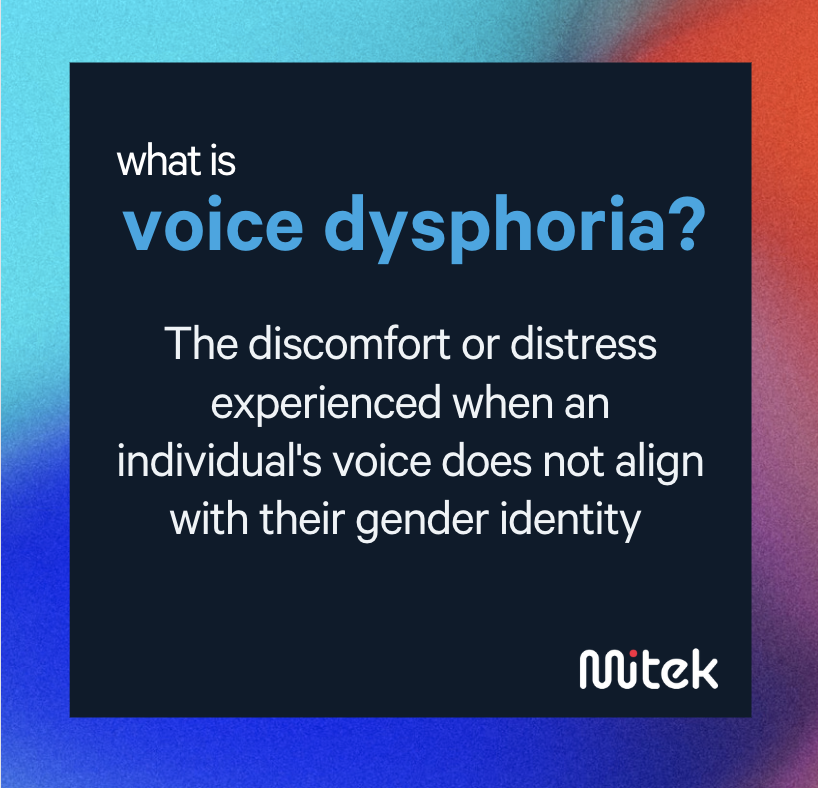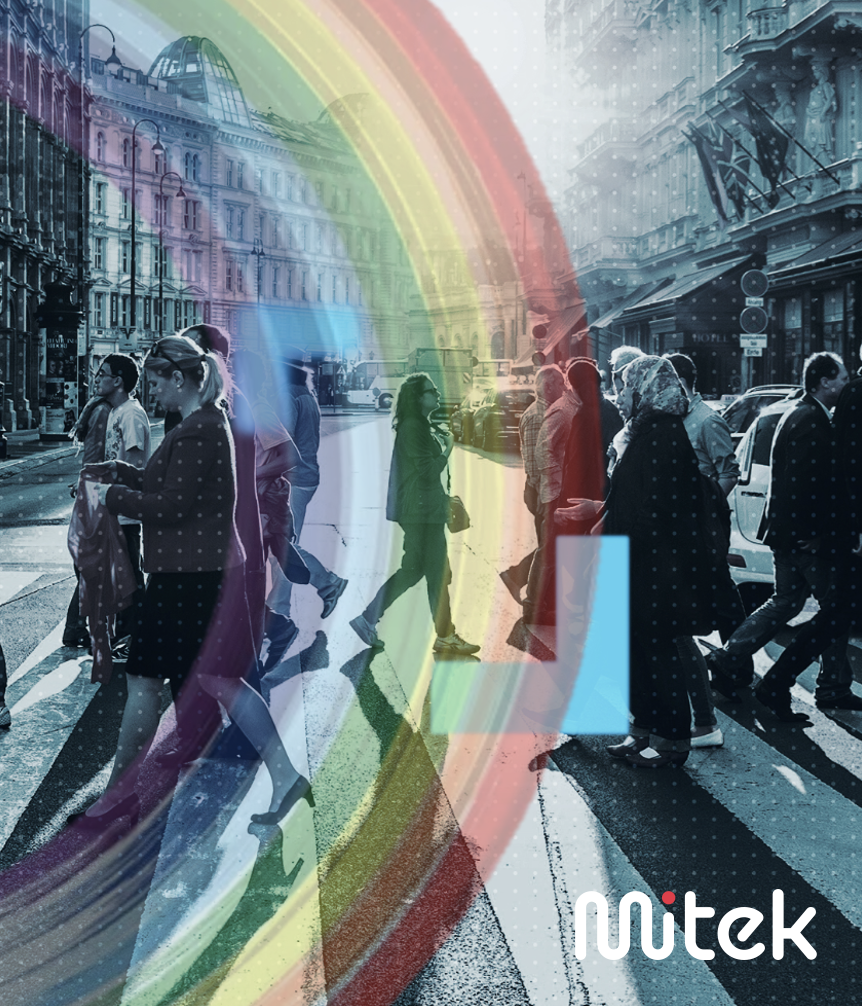In an era where technology has become an integral part of our daily lives, voice biometrics stands out as a remarkable tool that has transformed the way we interact with our devices. Voice biometrics, also known as voice recognition technology, utilizes unique vocal characteristics to identify individuals. This technology has opened new doors for various applications, and one community that has had its ups-and-downs from its advancements is the transgender community. Voice biometrics have delivered great benefits, but also can be a source of frustration and discrimination for people whose gender identity, gender expression or behavior does not conform to that typically associated with the sex to which they were assigned at birth.
This blog examines the pros, cons, and impact of voice biometrics for transgender and gender diverse people.
Addressing challenges faced by the transgender community
While voice biometrics has proven to be a powerful tool in ensuring security and privacy, its implementation has also posed challenges for the transgender community. Below we explore the specific hurdles faced by transgender individuals in voice biometric systems and highlight the need for inclusivity and understanding in this rapidly advancing field.
Misalignment of voice and identity:
Transgender and gender diverse people often receive treatment that can include hormone therapy, vocal therapy, or vocal surgery to help align with their gender identity. However, voice biometric systems may still use their pre-transition voice patterns, leading to a mismatch between their voice and identity. This mismatch can result in their exclusion from accessing essential services or facing suspicion and potential mistreatment.
 The transgender experience with voice dysphoria:
The transgender experience with voice dysphoria:
For many transgender individuals, one of the significant steps in their journey is transitioning, which may involve medical interventions such as hormone therapy or gender-affirming surgeries. Transitioning can also involve social and legal changes, including changing one's name and gender markers. One difficult hurdle during and after the transition process can be voice dysphoria. Voice dysphoria refers to the discomfort or distress experienced when an individual's voice does not align with their gender identity. This dissonance can affect their overall well-being and hinder their ability to express themselves authentically.
Lack of representation in datasets:
Voice biometric systems rely on extensive datasets to establish a baseline for comparison and identification. Unfortunately, transgender voices are often underrepresented or not included at all in these datasets. This exclusion can lead to biased algorithms and inaccurate results when authenticating transgender individuals, further perpetuating discrimination.
Privacy and disclosure concerns:
Requiring transgender and gender diverse to disclose their transgender status or provide additional documentation to authenticate their voices can be a breach of privacy and may cause distress. It is crucial for voice biometric systems to respect individuals' privacy rights while ensuring accurate and inclusive authentication processes.
Learn more about biometrics and the transgender community here
Voice biometrics as a catalyst for inclusivity
This quickly evolving voice technology has become a powerful tool in addressing the challenges faced by transgender individuals, particularly in relation to voice dysphoria. By analyzing a person's unique vocal characteristics, voice recognition systems can recognize individuals based on their voice patterns, regardless of their gender identity or presentation.
 Voice biometrics not only provide a practical solution for transgender individuals in various aspects of life, but also empowers them to navigate daily interactions with more confidence and authenticity. Here are a few areas where voice biometrics has made a positive impact:
Voice biometrics not only provide a practical solution for transgender individuals in various aspects of life, but also empowers them to navigate daily interactions with more confidence and authenticity. Here are a few areas where voice biometrics has made a positive impact:
Personal devices and smart assistants:
Voice-activated personal devices and smart assistants, such as smartphones, smart speakers, and virtual assistants, now offer inclusive voice recognition features that have evolved to account for unique voice patterns, cadence, rhythm, inflection, intonation, and accents. This means that transgender individuals can access and control these devices effortlessly, without worrying about their voice triggering dysphoria or being misinterpreted.
Voice banking and authentication:
Voice biometrics has also revolutionized the field of voice banking and authentication. Transgender individuals can securely access their accounts, make transactions, and authenticate their identities using voice recognition systems that are designed to be inclusive and accommodating.
Professional communication:
In the professional world, voice dysphoria can create hurdles for transgender individuals when it comes to phone interviews, conference calls, or public speaking. Voice biometrics offers a potential solution, as companies are exploring ways to incorporate inclusive voice recognition systems that respect and validate individuals' gender identities.
Promoting inclusivity and addressing challenges
 To mitigate the challenges faced by the transgender community, voice biometric systems need to include diverse voice samples from transgender individuals in their training datasets and machine learning. Collaborating with transgender advocacy groups and organizations can help ensure representation and reduce bias in these systems. Developers should also work towards creating adaptive algorithms that can accommodate variations in voice patterns due to factors such as gender transition or hormone therapy. These algorithms should be designed to adapt to an individual's unique voice characteristics over time, allowing for accurate and inclusive authentication.
To mitigate the challenges faced by the transgender community, voice biometric systems need to include diverse voice samples from transgender individuals in their training datasets and machine learning. Collaborating with transgender advocacy groups and organizations can help ensure representation and reduce bias in these systems. Developers should also work towards creating adaptive algorithms that can accommodate variations in voice patterns due to factors such as gender transition or hormone therapy. These algorithms should be designed to adapt to an individual's unique voice characteristics over time, allowing for accurate and inclusive authentication.
Companies are also responsible for taking proactive measures to be inclusive if they are implementing voice biometric systems. Businesses should invest more in sensitivity training for their staff to foster a more inclusive and understanding environment. Educating employees about the challenges faced by transgender individuals and emphasizing the importance of respectful treatment is crucial to create an inclusive experience for all users.
Voice biometrics holds promise for secure authentication, and by recognizing the unique vocal characteristics of individuals, this technology empowers transgender and gender diverse people to communicate authentically and confidently, without compromising their gender identity. As we celebrate the advancements in voice biometrics, it is vital to address the challenges faced by the transgender community in its implementation. By incorporating diverse datasets, developing adaptive algorithms, and promoting sensitivity training, we can create voice biometric systems that are inclusive, respectful, and accurate for all individuals.

